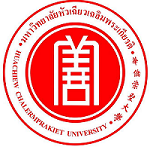Please use this identifier to cite or link to this item:
https://has.hcu.ac.th/jspui/handle/123456789/4715| Title: | Comparison of Effects of the Five Points Hands Free Program Versus Standard Eye Exercises in Office Workers with Computer Vision Syndrome in Trang Hospital |
| Authors: | Watcharin Tayati Tidaporn Tairattanasuwan วัชรินทร์ ทายะติ ธิดาพร ไตรรัตนสุวรรณ Trang Hospital. Rehabilitation Department. Physiotherapy Unit. Vestibular Rehabilitation Clinic Huachiew Chalermprakiat University. Faculty of Physical Therapy |
| Keywords: | Five Points Hands Free ห้าจุดหยุดเวียนศีรษะ Computer vision syndrome กลุ่มอาการทางตาจากคอมพิวเตอร์ คอมพิวเตอร์วิชั่นซินโดรม การทรงตัว Equilibrium (Physiology) Vestibular nerve เวสติบูลาร์ Dizziness เวียนศีรษะ Vertigo Vestibulo-ocular symptoms อาการที่เกิดจากความผิดปกติของระบบการทรงตัวที่ส่งผลต่อการมองเห็น Vestibular/Ocular Motor Screening การตรวจคัดกรองการเคลื่อนไหวของการมองเห็น Medical personnel บุคลากรทางการแพทย์ |
| Issue Date: | 2025 |
| Citation: | ASEAN J Rehabil Med 35,1 (2025) : 20-27. |
| Abstract: | Objectives: To compare the effects of the five-point hands free (FPHF) exercise program and standard eye exercises on computer vision syndrome (CVS) and vestibulo-ocular symptoms among Trang Hospital staff. Study design: A prospective, comparative, cluster-randomized study Setting: Trang Hospital, Trang, Thailand. Subjects: Sixty-two office workers with CVS symptoms. Methods: Participants were divided into a standard exercise group (n=31) and a FPHF group (n=31). CVS symptoms were assessed using the CVS questionnaire. Vestibular ocular motor function was evaluated using the Vestibular/Ocular Motor Screening (VOMS) tool before and after a 3-week intervention. Results: After three weeks, both the FPHF and the standard group improved CVS and VOMS scores. The FPHF group had a reduction in almost all symptoms, similar to the standard group. The FPHF group significantly reduced headaches, dizziness, and fogginess during VOMS (p < 0.05). However, between-group differences in CVS and VOMS cumulative scores were not statistically significant. Conclusions: The FPHF program demonstrated potential benefits in reducing CVS and vestibulo-ocular symptoms, suggesting that it may be a viable alternative intervention for managing CVS. However, further research is needed to establish its long-term effectiveness compared to standard exercises. |
| Description: | สามารถเข้าถึงบทความฉบับเต็ม (Full Text) ได้ที่ : https://he01.tci-thaijo.org/index.php/aseanjrm/article/view/271740/185793 |
| URI: | https://has.hcu.ac.th/jspui/handle/123456789/4715 |
| Appears in Collections: | Physical Therapy - Articles Journals |
Files in This Item:
| File | Description | Size | Format | |
|---|---|---|---|---|
| Comparison-of-Effects-of-the-Five-Points Hands-Free-Program-Versus-Standard-Eye-Exercises-in-Office-Workers-with-Computer-Vision-Syndrome-in-Trang-Hospital.pdf | 76.07 kB | Adobe PDF | View/Open |
Items in DSpace are protected by copyright, with all rights reserved, unless otherwise indicated.
